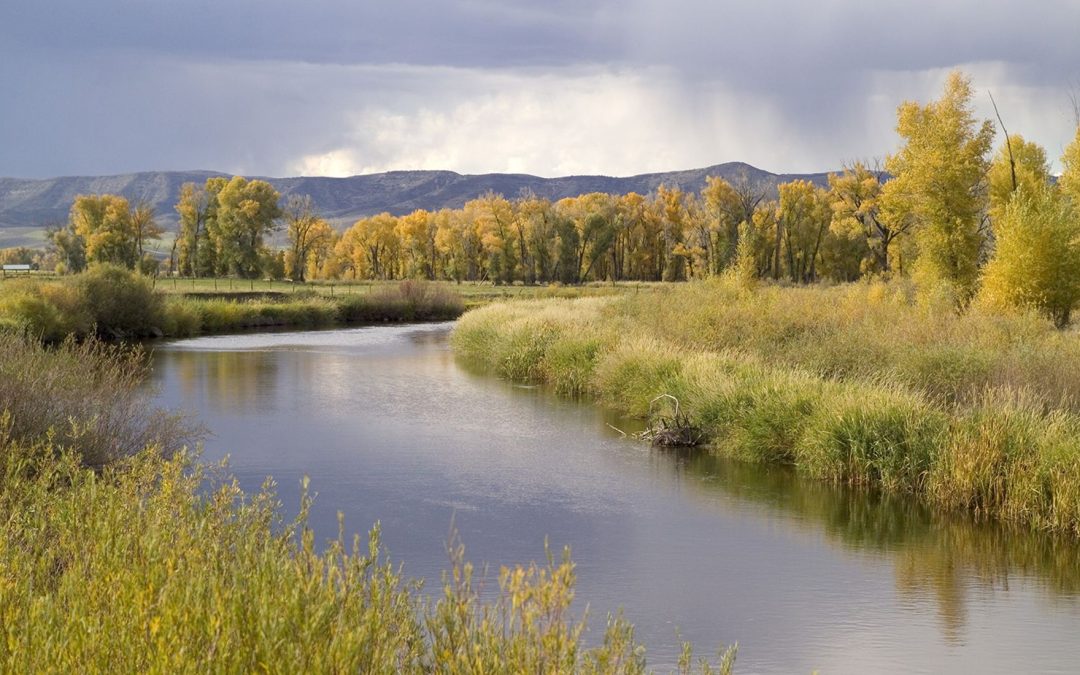Water bodies can take many forms: backwater sloughs edged in cattails, riparian forests on a river’s bend, or an elk wallow high in the mountains. Some are ephemeral tributaries, occasionally being scoured from floods or drying out for parts of the year. Wetlands stabilize streamflows both over the seasons and through a series of drought-stricken years, recharge aquifers, filter pollutants, mitigate stormwater runoff, and supply crucial wildlife habitat. More than 80% of species in the West rely on wetlands and riparian areas, according to the Colorado Wetland Information Center at Colorado State University.
Over the last three presidential administrations, certain categories of wetlands and waterways have been revised in and out of inclusion under the definition for “waters of the United States,” also known as WOTUS, a federal status that extends them protections under the Clean Water Act. The act regulates the discharge of pollutants.
In Colorado there is no state program to protect certain wetlands and waterways from dredging, filling and other damage if they’re not covered by the Clean Water Act. The state has always relied on the federal government’s program for dredge and fill permits.
Changes to the definition of WOTUS occurred in 2015, 2020 and 2021. Now, in 2022, change is once again afoot, with the U.S. Environmental Protection Agency and U.S. Army Corps of Engineers revisiting their rule and, at the same time, the U.S. Supreme Court considering a case that could also weigh in on which waters qualify as WOTUS. Recent definitions for what qualifies have bounced between broader and narrower.
“A narrow definition of waters of the U.S. leaves an incredibly important water resource value unprotected by federal law—which is basically uniform across the nation—and then it’s up to the states to decide what to do, and some states won’t decide to protect those areas at all,” says Joro Walker, general counsel with Western Resource Advocates. The 2020 definition, for example, excluded all ephemeral waterways and some wetlands. Ephemeral streams represent more than 25% of Colorado’s stream miles, according to Colorado Trout Unlimited. According to Colorado’s Water Quality Control Division, some 25% to 50% of Colorado streams, lakes and wetlands could have been impacted by the 2020 rule.
But farmers and ranchers, developers, and other business owners worry the broader definition would mean federal involvement in day-to-day decisions around their properties, or the need to consult a lawyer on something like running water through an irrigation ditch every few years. The 2015 rule included a broad definition and has been referred to as a federal “overreach.”
Now though, the Colorado Farm Bureau and others who are regulated are calling for clarity and security, something they hope the Supreme Court will provide.
“It’s hard to know what is covered,” said Travis Vincent, general counsel and director of public policy state affairs for the Colorado Farm Bureau. “We want a more bright-lined test so our members have a better understanding of when their property or something on their property would be regulated under WOTUS.”
Currently, the federal agencies are relying on the definition that was in place from the 1980s to 2015, which they call a “familiar approach” that will “support a stable implementation of ‘waters of the United States.’” Meanwhile, the agencies’ proposed final rule was submitted to the Office of Management and Budget in September 2022 and, according to EPA, they plan to issue it by the end of the year.
In October 2022, the U.S. Supreme Court heard Sackett v. EPA, a case that asks whether certain wetlands are waters of the U.S. Justices have previously written that WOTUS applies only to “relatively permanent, standing or continuously flowing bodies of water” or wetlands that have a “significant nexus” to traditionally navigable waters, but failed to achieve a majority opinion. This has left, as the Sacketts have said, a landscape of “fruitless confusion, conflict, and litigation.”
The court’s opinion could newly define and clarify which waters qualify as waters of the United States—and could affect EPA’s regulatory process, the rulemaking underway at the Corps and EPA, and the level of protection that certain waters receive.
“It’s hard to speculate on what the [U.S. Supreme Court decision] is going to look like,” says Trisha Oeth, director of environmental health and protection at the Colorado Department of Public Health and Environment. “If the outcome were to change the definition of WOTUS or add a new test for what WOTUS includes, that could have an impact here in Colorado.” If a new definition were to apply to fewer water bodies than it does now, that would mean that Colorado waters would have less protection than they do today, she says.
“We are in a very dynamic situation with the rule and have been for a number of years,” says Oeth. “I think all interests would benefit from certainty and stability in this area so we continue to watch it very closely and have been having conversations with stakeholders here in Colorado to figure out, long-term, what is the right path for us.”


 Print
Print